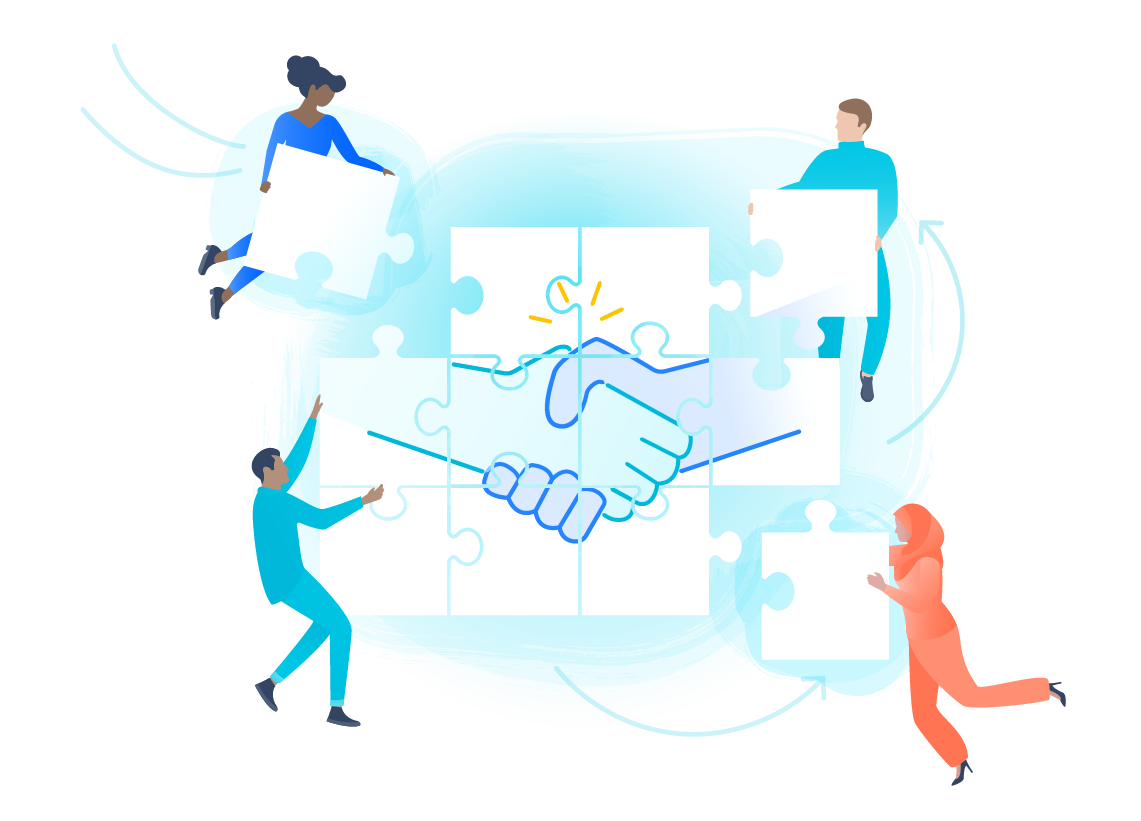See if this scenario sounds familiar:
I was in a post-mortem meeting once that grew heated because a senior stakeholder was singling out an engineering manager, blaming them for circumstances that were completely beyond their control.
Incidents and outages are unavoidable, and they don’t feel good. We’re trained to restore service as quickly as possible while communicating with our stakeholders and customers, and our leaders generally trust us to do that.
In that postmortem I described above, I felt this trust had broken down from the stakeholder’s direction. The incident should have been a learning opportunity, but instead devolved into a blame game. In hindsight, I wish I’d spoken up in defense of this manager – but because of the stakeholder’s seniority, I didn’t.
Experiences like this one reinforce the importance of a blameless culture – a manifestation of psychological safety where individuals and teams can examine and react to incidents, outages, and problems with full transparency – without making anyone feel they’ll be punished.
Whether they inadvertently ran a command that resulted in something going wrong or they have knowledge of a lurking “skeleton in the closet,” a blameless culture enables individuals to speak up on issues that may otherwise be covered up due to fear.
The importance of blameless culture
I’m a Senior Incident Process Owner on the Atlassian Engineering team. When your day-to-day work involves incident mitigation and post-incident reviews (PIRs), blamelessness isn’t just “right” – it’s critical to success. But I’m also a firm believer that any organization and any team can benefit from the basic principles of blamelessness, transparency, and psychological safety – and suffer the consequences if it’s not a priority.
A fellow Atlassian, Modern Work Evangelist Mark Cruth, says that “the most important quality of a high-performing team is having psychological safety. At Atlassian, we spend tons of time researching what creates healthy, high-performing teams, and time and time again, psychological safety rises to the top.”
Blame isn’t just uncomfortable in the moment; it poisons the well, inhibiting progress and damaging organizational culture in ways that aren’t reflected in metrics and data signals.
It makes PIRs weaker because the incidents themselves become harder to understand and analyze – nobody wants the finger pointing at them, so details are hidden, timelines muddled, and cause and effect lost. Ultimately, we’re forced to make assumptions and, ultimately, the PIR suffers. As Mark puts it, “if people feel uncomfortable voicing ideas or concerns, the best ideas might remain hidden, and our best work held back.”
How to cultivate a blameless culture
I’m coming at this from an Atlassian perspective, but I think many of our internal principles and best practices can help a broad range of teams avoid the pitfalls of a blame-centric culture. Here are a few ways we do it:
Build it into your values
Atlassian was built on our core company values, and the application of those values naturally matures alongside company growth. This can be difficult, but we don’t do it because it’s easy – we do it because it’s right.
We strive to live our values and bring our whole, authentic selves to work every day. To err is human, and it’s a natural part of our learning process. I’m proud to be part of a company that sees we are all people, and that bumps in the road are a natural part of our journey to create amazing products and experiences for our customers.
Blamelessness as a practice has a place within each of our core values:
- Open company, no bullshit: Transparency is paramount. We acknowledge both positive and negative aspects in a mindful and caring way, so that we can learn objectively and constructively (more on this below).
- Build with heart and balance: When we have thoughtful, long-term, blameless perspective on what success really looks like, we’re more likely to identify threats before they snowball, and we are better placed to more effectively resolve them when they occur, leading to much more resilient products – and people!
- Don’t #@!% the customer: Preventing issues before they happen is one of the best ways we can serve our customers. Blameless culture enables better problem-solving, full stop.
- Play, as a team: Blamelessness and psychological safety aren’t just good business practices – they strengthen team bonds too.
- Be the change you seek: Those of us who are in a position to call out blame-oriented processes and practices should feel empowered to do so – let’s all play our part in cultivating a healthy, blame-free culture.
Prioritize transparency
Transparency is critically important, especially in the world of incident response, but also…everywhere else. The better we understand our failures and how we responded to them, the better we can prepare ourselves and Atlassian to fend them off in future, especially as we scale in size and expand our offerings.
To build a foundation for blameless culture, organizations should strive for radical transparency whenever possible. This might look like:
- Committing to transparency at all levels, from individual contributors to the C-suite.
- Sharing data/reports and personnel decisions (hiring and firing) widely
- Putting everything in writing
- Embracing (respectful) dissent
- Prioritizing transparency even when it’s hard
- Putting practices into play that encourage the best ideas to emerge (Mark suggests the Disruptive Brainstorming Play from the Atlassian Playbook)
- Reflecting on a regular basis to assess the level of psychological safety on the team (our Team Health Monitor, also from the Playbook, is a great tool for this)
…but don’t be a jerk
At Atlassian, information is open internally by default, and sharing is a first principle. But it’s possible to abuse the value of transparency value by, well, being a jerk in the name of it.
Speaking your mind requires equal parts brains (what to say), thoughtfulness (when to say it), and caring (how it’s said). But it’s also important to take into account the norms and dynamics of your individual team. Try the Working Agreements Play from the Atlassian Playbook to reach a consensus on how to work together effectively and respectfully.
Prioritize “right” over “right now”
We should regularly ask ourselves: Are we navigating the “right” versus the “right now” in terms of preparing ourselves for the future – or are we just slapping on a bandage and hoping for the best? It can be hard to know where to start with these sorts of conversations, but an easy inroad could be holding a Premortum. This exercise allows you to explore the future safely and prepare for some of the risks that might pop up.
In Atlassian’s Engineering org, risks – formal records tracked on an official register of potential issues – empower teams to raise endemic issues that cannot easily be fixed at their level. They’re a mechanism whereby anyone can raise potentially serious underlying problems, and have someone with the appropriate level of authority make a decision on it. Think of it as the opposite of sweeping something under the rug.
Today’s non-priorities can easily become tomorrow’s emergencies, and it’s critical to surface those tiny “specks” that could snowball into a significant incident. This can feel uncomfortable – again, the easier path is to ignore problems to avoid rocking the boat – but taking this kind of long-term view is always the right choice.
Being blameless is hard – but the alternative is worse
Building and maintaining a blameless culture is hard, in large part due to human nature. People are naturally inclined to blame others – the phenomenon is known as fundamental attribution error – and it’s crucial to overcome that tendency in the name of blamelessness.
Fundamental attribution error: An individual’s tendency to attribute another person’s actions to their character or personality, while attributing their own behavior to situational factors outside of their control.
An ardent commitment to values and radical transparency are optimistic goals given the realities of a bunch of humans trying to run a complex business, but even when you inevitably fall short, “A-minus is a long way from B-plus.” Put another way, don’t let the perfect be the enemy of the good.
Mark sums it up nicely: “Blameless cultures are built on psychological safety, which is only possible when leaders promote open dialogue, constructive dissent, and modeling vulnerability,” he says. “And whatever you do, never blame the person…the problem is where to focus your attention.”





 )
) 








































